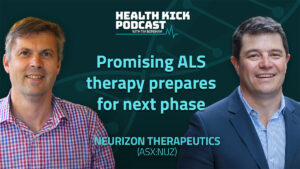‘Mice are a failed experiment’: Why you shouldn’t get revved up about pre-clinical trials

Pic: Luis Alvarez / DigitalVision via Getty Images
There is a cold, hard truth behind the exciting veneer of drug development in the biotech space — more than 90 per cent of drugs fail to make it from Phase 1 to the market.
Clinical trials are generally divided into three phases. Phase 1 focuses on safety, phase 2 tests for effectiveness and phase 3 examines whether the new drug is an improvement on existing treatment. Sometimes trials are further divided into parts A and B, where a B stage is generally more rigorous.
But before all of that, there are pre-clinical trials. These are trials where the drug is tested for efficacy in animals – often mice, sometimes sheep, even dogs, in the case of cancer fighter PharmAust (ASX:PAA).
Listed biotechs regularly release data from pre-clinical trials, usually pointing to encouraging results that could lead to the company seeking to trial the drug in human patients. Another anti-cancer biotech, Patrys (ASX:PAB), is a recent example — it reported that its PAT-DX1 drug effectively treated brain cancer in mice, and its stock jumped 100 per cent on the news.
But the truth behind those often exciting and encouraging results is that the drugs, if moved into human trials, are overwhelmingly likely to fail.
But in a recent article for Australian scientific magazine Cosmos, science journalist Anthony King spoke with world-leading researchers who described pre-clinical trials as a “failed strategy”.
“Single gene mouse models are different from the illness that we experience in humans,” neuroscientist Malcolm MacLeod, University of Edinburgh, told Cosmos.
Ronald Davis, director of the Stanford Genome Technology Centre, told Cosmos the obvious physiological and biological differences between mice and men means one should never get too excited about pre-clinical data.
“Mice eat garbage,” he said. “Their habitat is extremely exposed to microorganisms that they eat.
“Mouse studies are valuable but we always need to move to humans. We can cure cancer pretty effectively in mice, but the agents don’t work in humans in most cases.
“These are complicated diseases and we live far longer than mice and evolutionarily we are far apart.”
MacLeod argued that the money spent advancing pre-clinical Alzheimer’s trials into humans had been a colossal waste of money.
“If all the money spent on biomedical research in the last 20 to 30 years had been spent instead on public health, stopping smoking and alcohol control, it would have had a greater impact on the incidence and severity of Alzheimer’s disease,” he said.
- Subscribe to our daily newsletter
- Join our small cap Facebook group
- Follow us on Facebook or Twitter
Those working for biotech companies know the dangers of pursuing drug development. Factor Therapeutics (ASX:FTT) reiterated this to shareholders last year, when its Phase II leg ulcer trial failed to show any improvement on standard of care.
“It is well recognised that, in developing new treatments, the Phase 2 stage is associated with the highest risk – a majority of products are not able to confirm the potential promise shown in earlier stage preclinical or clinical studies, with a success rate of only 30 per cent for moving from Phase 2 into Phase 3,” the company said.
Dr Rosalind Wilson, the former CEO of Factor, told Stockhead she had turned down an approach from another biotech company prior to joining Factor because of their over-excitement about pre-clinical trials.
“They were thinking of moving into human applications and telling me all about their success in horses and dogs and the nature of the product was that it didn’t need to go through the traditional drug development process,” she said.
“I replied that I wasn’t terribly interested in results in dogs and then exposing humans to your treatment. All it takes is one bad experience and your product is wrecked.
“You always believe you are going to be in that 30 per cent, not the 70 per cent. But there seems to be a bit of a gap in the market between reality and expectation. That’s where big pharma gets it right.
“Pre-clinical results are important but the reason we do clinical trials is it needs to work in humans.
“You always see headlines for new treatments for cancer coming and they’ve cured mice of lots of cancer, but then you later read that it failed in the clinic.”
UNLOCK INSIGHTS
Discover the untold stories of emerging ASX stocks.
Daily news and expert analysis, it's free to subscribe.
By proceeding, you confirm you understand that we handle personal information in accordance with our Privacy Policy.








